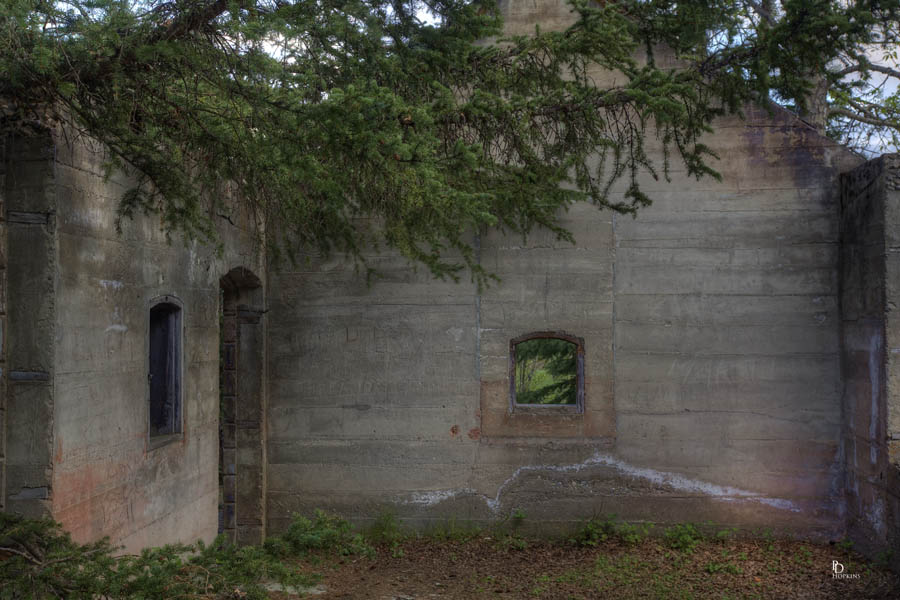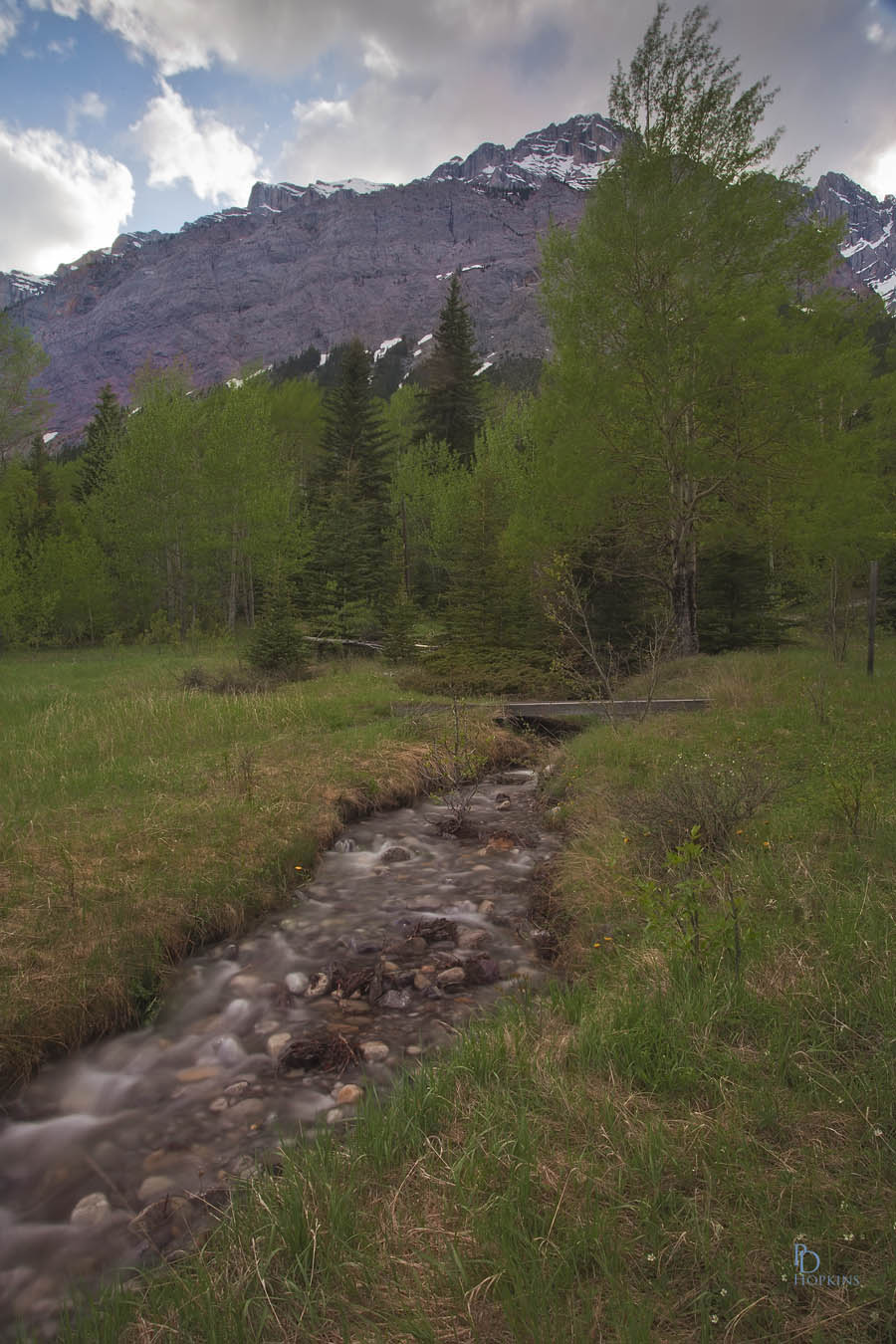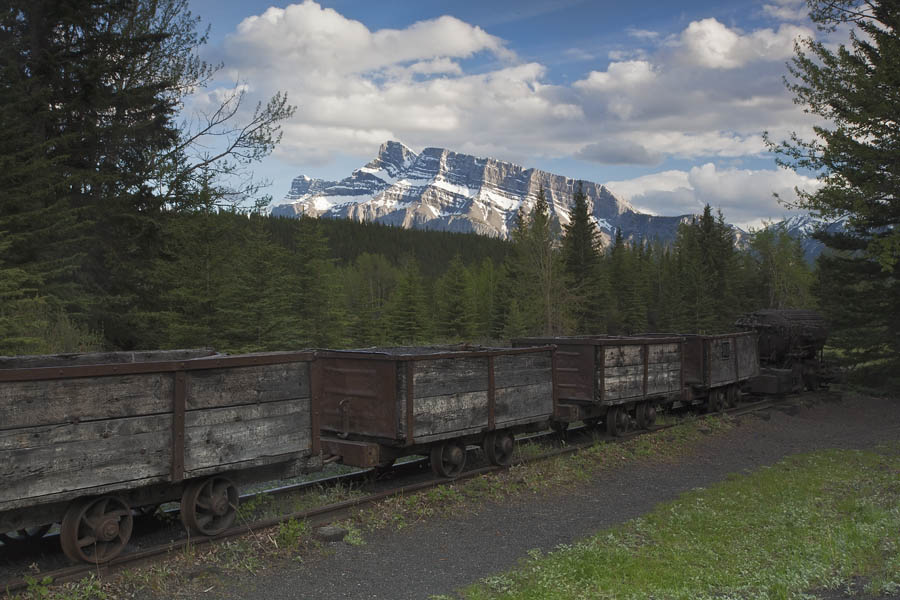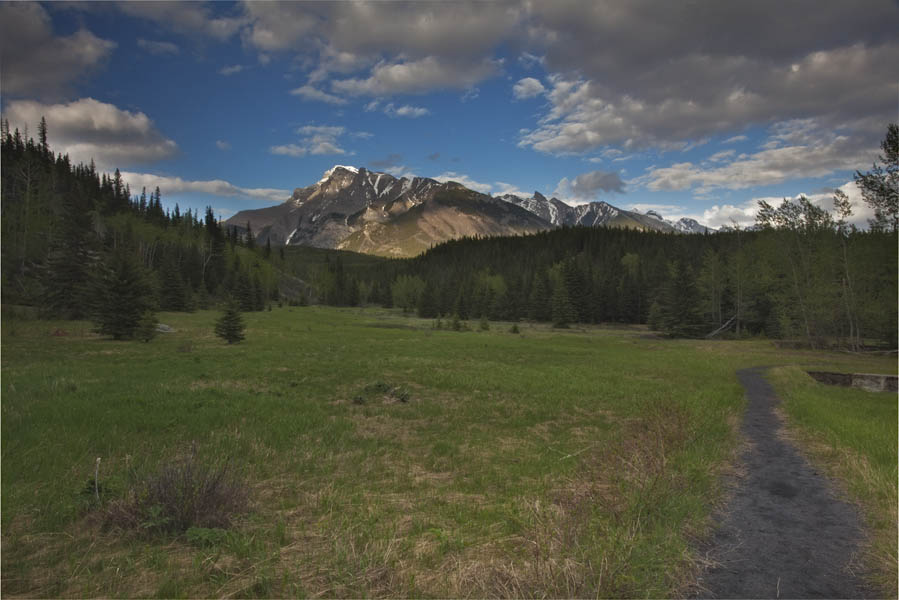Bankhead, Alberta was a small coal mining town that existed in the early twentieth century in Banff National Park, near the town of Banff, Alberta. The mine was located at Cascade Mountain, which contains high grade anthracite coal deposits. The Bankhead coal mine was operated by the Pacific Coal Company, a subsidiary of the Canadian Pacific Railway, which needed the coal to fuel its steam engines. The mine began operations in 1903. A local newspaper report published 17 June 1922 indicated that notices of the closure of the Bankhead Mines had recently been posted through that town. The notices made it clear that on and after 15 July the staff of Bankhead Mines would not be required and the coal operations would cease. The town, with a population of around 1,000 people was abandoned. In 1926, many of the town’s buildings were moved to Banff and Canmore.
Today, an interpretive trail runs through Lower Bankhead. Signs are placed along the trail identifying the major buildings, as well as other interesting facts. Many foundations of buildings are visible. One building remains intact and contains displays viewed through the windows. Bankhead is located on the Lake Minnewanka road, just a few minutes drive from the Banff townsite or the Trans Canada Highway.
Last evening, I visited the former townsite and took some photos. It is actually a good location to get pictures of the mountains in the Banff area. This first picture shows the inside of what remains of the old Lamphouse building. The Lamphouse played a vital role in the total mining operation. Each miner was assigned a numbered mining lamp. These lamps would be given to the miners at the beginning of their shift and were returned to the lamphouse at the completion of the shift. If a miner’s lamp was missing, a search for the miner would be initiated.

Due west of the townsite at Lower Bankhead is Cascade Mountain, one of the recognizable landmarks of Banff and the source of coal for the mining operation. This photo was taken from quite close and I was able to capture only a small part of the mountain with a wide angle lens.

This next photo was taken facing southward toward the town of Banff, a nice view of Mount Rundle. You can see remnants of the coal mining operation in the foreground, old coal cars used to rail coal out of the mine.

My last photo for today’s post shows Mt Inglismaldie and the Fairholme Range to the east of Lower Bankhead. If you look closely, you can see the corner of the foundation of an old building to the right of the pathway bordering that side of the picture.

I found the site to be of greater interest to me for its great views of the surrounding scenery. More so than for the remnants of the old town. The history is interesting but there simply isn’t much left. I used a wide angle lens (17-40 mm) for all the pictures, something I don’t often do. I found it particularly good for the last shot where I wanted to include the broad expanse of meadow and mountain range I could see before me. It also enabled me to capture as much as I did of the imposing face of Cascade Mountain in the second picture. Cascade is an interesting photo subject in that you can get very close to a very large mountain. I hope to get some close-in, wide angle shots later this summer, when the wildflowers are in bloom.
